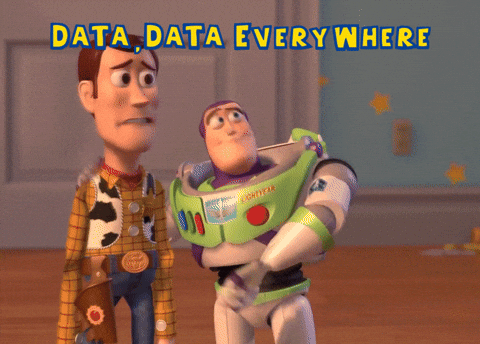We all love milk! Whether it’s cow’s milk or plant-based milk, we want it all the same.
Let’s be honest, we buy milk based on some kind of influence. It can be influenced by our family, climate change, or health choices. This applies to growing up milk (GUM) for toddlers too. There are a gazillion formulas shouting at our faces that they are the best for our young ones. But how can we cut through the noise and influence people to buy a particular brand? That’s where influencer marketing magic comes in. Here in Nuffnang, you know us, we definitely do not just stop here. Having the privilege to work with numerous GUM brands and influencers, we have just enough data to gaze upon (and analyze lol) to spot trends and patterns.

Excitingly, we did find something out of this data-gazing process. Disclaimer: This is for Instagram only. Let’s dive into 3 discoveries we found and become milk benders after this (hopefully before the fire nation attacks):
No One is Better than The Other
Okay, we’re not talking about milk now, but the influencers who talk about the milk. There is always an obsession to have high engagement rates while having a high absolute reach for every influencer. Sadly, data disapproves of our fantasy to have the best of both worlds. Data tells us that higher following influencers are usually destined to have lower average engagement rates while lower following influencers are usually destined to have lower average reach.




HOWEVER, data shows us the bright side of this issue too. Though it might be harder for higher following influencers to have high engagement rates, they actually can push the reach of our brands to infinity and beyond (okay I’m just exaggerating here but you get my point). This means even though alpha and celebrity influencers might not have good engagement rates, they’re definitely better at helping us with top-of-mind awareness (TOMA). They can guarantee a certain level of average reach.
As for micro-influencers, they have different superpowers. Yes, they might not be able to push our brand to reach the moon, but they’re good at helping us to build community – with a higher average engagement rate. That’s simply because influencers with lesser followers have more capacity to nurture and interact with their followers. When personal interaction and discussions are more prevailing, that’s when a loyal community for our brand could be built (and that’s how Lululemon grew).
Video is the Future


As we’re stepping into the metaverse era, we know that videos would stand out, but never expected that the difference would be so steep. While we data gaze, videos show us a very promising trend in average engagement rate and reach. Videos here include reels and video posts. Currently, GUM brands haven’t utilized our influencers in making videos on their Instagram pages as much as photos. So we highly recommend brands invest in video deliverables whenever possible.

It is also important to highlight that the Head of Instagram, Adam Mosseri, announced last year that Instagram is no longer a photo platform. They will put more emphasis on videos moving forward, preparing for the transition into the metaverse. As social media users ourselves, we also have to admit that we consume more video than photo content nowadays on Instagram. It’s a clear sign of where the future is heading.
Consumer Income Level Affects Content Directions
When we’re data gazing, we also broke down GUM into 3 categories – mass milk, premium milk, and tailored nutrition milk. And it’s really interesting to find out that the followers respond to content from each category differently. Followers that responded to mass milk Instagram content lean more towards content that highlights holistic growth, especially spiritual/religious growth for the Muslim community. Besides that, they seem to also prefer content that focuses on “mom knows best” (parental authority) more than “kid loves the taste” (children’s autonomy) direction.
As the income level increases, the awareness of children’s autonomy among parents seems to increase too. Content that showcases parents’ care and understanding of their kid’s preferences and well-being seems to work better for this group of communities. When it comes to tailored nutrition milk, the crowd becomes more interesting as the milk proposition in this audience group is also slightly different from the other 2 categories. Parents in this group seem to respond better to content that acknowledges both children’s autonomy but still emphasizes parents’ authority at the same time. This might be because the kids that need tailored nutrition milk usually need more parent intervention when it comes to taking in adequate amounts of nutrition.

Hope this write-up will give more power to the milk (brands)! Now that we understand what our influencers’ superpowers can be and how to interact with our community better, we can rethink the goals we set for our influencer-led campaigns based on data-driven insights! For a more professional write up about this research, you can refer to the article here.